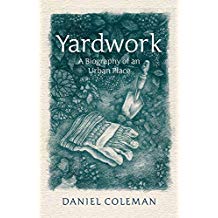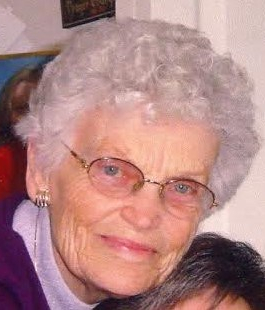How very wonderful to have two pictures sent to me this week from Ipswich, Suffolk. The first picture is of the house on Burlington Road where the Maybery family lived while Rev. Maybery was the minister at Tacket Street Congregational Church from 1873 to 1876. Laura Cloke shared the picture of the home she and her mother have been researching.

Arnold and Frank were babies in this house.
The second picture this week was from a gentleman associated with the church (Tacket Street , now called Christchurch) where Rev. Maybery served until his death in 1876. The picture is very old and thus a bit spotty but is a real treasure, don’t you think?

Back now to five Maybery children who have been taken in by a childless aunt and uncle after their parents have both died: one in 1876, and the other in 1879. Their father had been a minister, and their uncle is a merchant. They had been living with their mother in Bristol for 3 years after their father died. We don’t know if Mrs. Maybery was sick during that time. We do know that there were family members near. Their maternal grandparents lived just around the corner. One house was on Freemantle Square and and the other on Freemantle Road. Coincidently, there are houses for sale on both of those streets this week in Bristol. You can see the modern refurbishment of houses that were there in Bristol of 1871 or earlier.

In contrast with Georgian houses that have been refurbished, there is in Bristol a Georgian House Museum where the house has been restored to the way it was in the Georgian period when it was built. The house at this link seems similar to the house on Chantry Road where the Mayberys were living with Eliza Sinnock in 1901.
Census documents do not provide answers to all our questions about the upbringing of the 5 children by their aunt and uncle, William and Eliza Gibbons. Being a teacher, of course I have wondered about the education that the children had. Sometimes in the census documents children after a certain age are labeled as a “scholar” in the space where employment is to be recorded. In the 1881 census, there is no record of that nature for the 5 children who range in that year from 4 to 10. Other 9 and 10 year olds in the document are listed as “at school” or as “scholar”, but mostly the designation is used for children over the age of 10. Although there is no “governess” listed, there is domestic help in the Sinnock home.
I found one reference to Crofton House School that Alfred attended. After education became compulsory in England in 1870, there were many kinds of schools. One website attempted to list the many schools in Bristol and give a little information about each. A Mr. Charles E. Cooper started a school called Crofton House and advertised his school as providing ‘high class education for sons of gentlemen’. It is not clear how long the school remained in operation or if the other two boys attended.
By the time the next census is taken in 1891, the children are ranging from 14 to 20. They now have on the job training provided by apprenticeship in their uncles’ business. Perhaps the girls attended a “school for young ladies”. There were several nearby.

Only the 14 year old is listed as a scholar. 

At the young ages of 19,16, and 15, the three boys are listed as Provision Salesman (Alfred), Apprentice Provision Warehouse (Arnold) and “ditto” for Frank. According to the Dictionary of Old Occupations , the meaning of “Provision” is food supplies. The main import for Mr. Gibbon’s business was flour. William Gibbons was a partner in a business called Gibbons, Sinnock and Co. His partner was his brother-in-law, Alfred Howard Sinnock. The business of Provisions involved importing, wholesale and retail levels. According to one source, the company had been started by 1879 with the help of a loan from St. Augustine bank.
Instead of 5 adopted children, Alfred Howard Sinnock had his own large family. Alfred had married Emma Clara Richards in Bristol, Gloucestershire, England, on April 15, 1862, when she was 18 years old. After giving birth to Edith, Ethel, Harold, Gilbert, Edgar, Edna, Annie, Hilda, Gertrude, Emma Clara Richards died in September 1890 in Bristol, Gloucestershire, England, when she was 46 years old. It’s hard to know if her death was a factor in the break-up of the business of Gibbons and Sinnock, but she died in September of 1890, and the company dissolved in June of 1891. After she died it seems both Alfred, her husband, and William, his brother-in-law, continued in the wholesale importing trade but with different relatives for partners.

![]()
Mr. Sinnock continues in the importing and wholesale business with another brother Frederick William Sinnock while William Gibbons is in business with his nephews who had been raised as his sons.
The years around the turn of the century also brought more changes for the Maybery family. By the 1901 census in England, Mrs. Gibbons, is now a widow, and with the grown Maybery children, is living on Chantry Road Number 12. The information about William Gibbons legacy to Eliza follows.

This house seems to be a step up, looking larger than the previous house called Grafton Villa on Arley Hill. On Arley Hill, the family had been close to their mother’s mother, Susan Matthews Sinnock, who lived with a maid-servant in a house nearby. But in 1897, William Gibbons had died, and then in 1900 Grandma Susan had died. William had lived for 61 years, and his mother-in-law who had given birth to 13 children had lived for 87 years.
When William Gibbons died, he left a legacy of £12763 pounds. 
UK Inflation Rate, £12,763 in 1897 to 2018
According to the Office for National Statistics composite price index, prices in 2018 are 12,523.81% higher than prices in 1897. The pound experienced an average inflation rate of 4.08% per year during this period.
In other words, £12,763 in 1897 is equivalent in purchasing power to £1,611,177.44 in 2018, a difference of £1,598,414.44 over 121 years.
Please note:
I do not understand how the above figures were calculated. I just visited a site that seemed to know how to figure out what the buying power of old wages or legacies would be today. I used it once before to figure out how rich Mr. Darcy from Pride and Prejudice really was.

What was it in the growing up, studying, working, and grieving in Bristol of the late Victorian years that would culminate in a decision to take a trip to Japan and come home the long way through Canada. Were there funds available now that had been tied up before? Why Japan, why Canada, and why Moose Jaw? Tune in later folks for Mayberys on the move. It’s time for a Transportation Theme: Boats and Trains.















 ds have heard me tell about the lady who showed up on the veranda of our house at 1037 Clifton Avenue, in August of 2002. She was wondering if she could have her picture taken on our porch because this was her birthday, and she was turning 80 years old. She had been born here in what was then her grandparents’ home on August 22, 1922. In a brief tour of the house, she designated our second floor study as the room of her birth. Her maiden name was Virginia Louise Bills. She was the daughter of Dick and Louise Bills, their youngest child. She had 3 older brothers: Burdette, Robert, and Don.
ds have heard me tell about the lady who showed up on the veranda of our house at 1037 Clifton Avenue, in August of 2002. She was wondering if she could have her picture taken on our porch because this was her birthday, and she was turning 80 years old. She had been born here in what was then her grandparents’ home on August 22, 1922. In a brief tour of the house, she designated our second floor study as the room of her birth. Her maiden name was Virginia Louise Bills. She was the daughter of Dick and Louise Bills, their youngest child. She had 3 older brothers: Burdette, Robert, and Don.